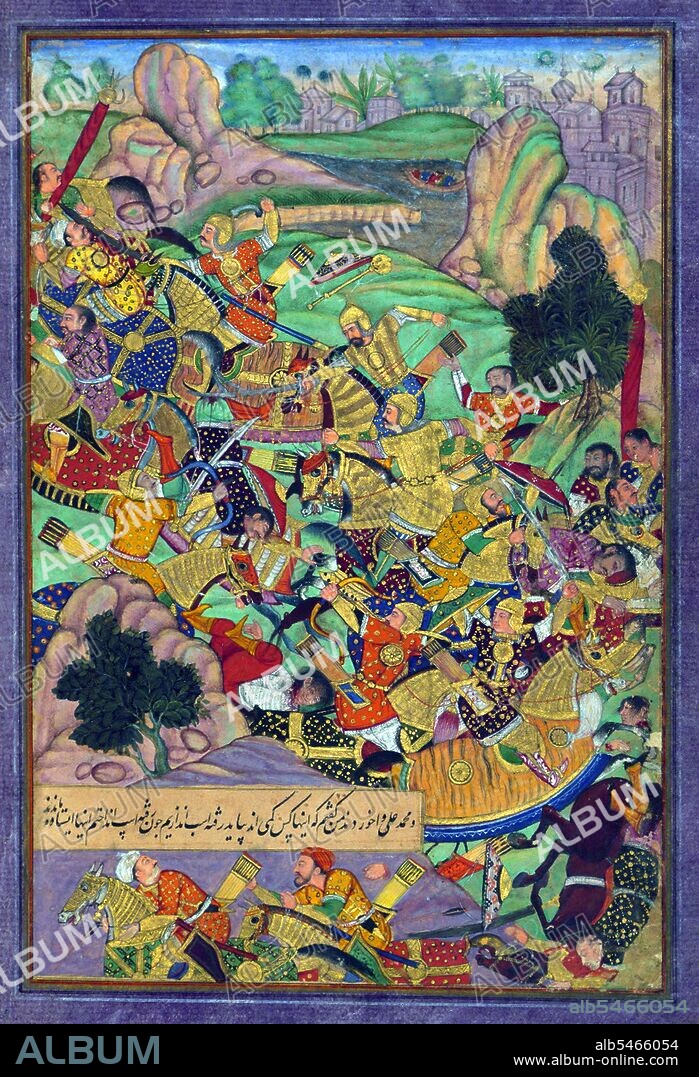alb5466054
India: Scene from the Baburnama. Zahir ud-din Muhammad Babur (1483-1531) the first Mughal Emperor, confronts his enemies

|
Add to another lightbox |
|
Add to another lightbox |



Title:
India: Scene from the Baburnama. Zahir ud-din Muhammad Babur (1483-1531) the first Mughal Emperor, confronts his enemies
Caption:
Baburnama (Chagatai/Persian: ???? ????;´, literally: 'Book of Babur' or 'Letters of Babur'; alternatively known as Tuzk-e Babri) is the name given to the memoirs of ?ahir ud-Din Mu?ammad Babur (1483-1530), founder of the Mughal Empire and a great-great-great-grandson of Timur. It is an autobiographical work, originally written in the Chagatai language, known to Babur as 'Turki' (meaning Turkic), the spoken language of the Andijan-Timurids. Because of Babur's cultural origin, his prose is highly Persianized in its sentence structure, morphology, and vocabulary, and also contains many phrases and smaller poems in Persian. During Emperor Akbar's reign, the work was completely translated to Persian by a Mughal courtier, Abdul Rahim, in AH 998 (1589-90 CE). This painting depicts the Mughal emperor Babur with his brave companions confronting their enemies in the mountains of Kharabuk and Pashamun. The text refers to Babur and his few men deciding to charge the enemy.
Credit:
Album / Pictures From History/Universal Images Group
Releases:
Model: No - Property: No
Rights questions?
Rights questions?
Image size:
3450 x 5055 px | 49.9 MB
Print size:
29.2 x 42.8 cm | 11.5 x 16.9 in (300 dpi)
Keywords:
ART • ARTS • ASIA IMAGE • ASIA PICTURES • ASIA • ASIAN IMAGES • ASIAN PICTURES • ASIAN • BABUR • EMPEROR • GREAT MUGHALS • HISTORIA UNIVERSAL • HISTORIA • HISTORICAL IMAGES • HISTORICAL PICTURES • HISTORICAL • HISTORY IMAGES • HISTORY PICTURES • HISTORY • INDIA • INDIAN • INDIGENOUS PEOPLES OF THE AMERICAS • INDIO • KAISER • KING • LEGEND • MOGHAL • MOGHUL • MOGUL • MONARCH • MONARCHY • MUGHAL • PAINT • PAINTING • ROYALTY • SOLDIER • TROOPS • WARRIOR • WARRIORS
 Pinterest
Pinterest Twitter
Twitter Facebook
Facebook Copy link
Copy link Email
Email

